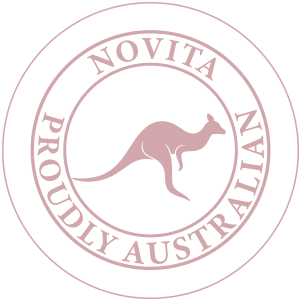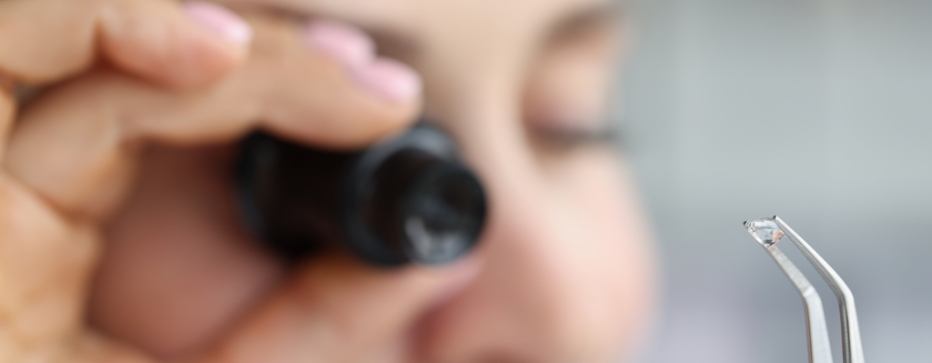BOOK AN APPOINTMENT


Since the late 1800s, scientists from all over the world have been attempting to reproduce diamonds in laboratories. It wasn’t possible until 1955 that General Electrics found a way to produce the first diamond. However, those diamonds were small with poor quality. It wasn’t until only a few years ago that technology reached a point capable of producing larger diamonds that had the high quality of a gem.
A mined diamond is created through the same method using heat and pressure as a lab grown diamond. Nature just happens to do it naturally over a much longer period of time.
Here’s the most jaw-dropping difference between lab diamonds and mined ones. Lab grown diamonds cost about 75% less than mined diamonds. And it’s not due to the quality. The price difference is due to the healthy competition found in Lab grown diamonds and the unhealthy monopolies that have occurred with mined diamonds. So while the stone can have the same quality, the cost for the consumer is massive. For example, to show the figures plainly, if a mined diamond were to cost $10,000, a Lab grown diamond of equal characteristics will cost around $2,500.

Both lab grown and mined diamonds are graded using the exact same grading system. This is commonly known as the 4Cs - Colour, Clarity, Cut, and Carat. This grading system was first created by Robert M. Shipley, founder of the Gemological Institute of America (GIA). This process is now the universal grading system used for all diamonds, regardless if they are lab created or mined from the ground.
In our opinion, this is the debate that results in the most fundamental and valuable difference between Lab grown and mined diamonds - Ethical versus Unethical. It is the reason why we stay away from mined diamonds and purely focus on the lab grown ones.
Unfortunately, it is well known the harm the diamond mining industry has on people as well as the environment. Countless lives are lost in the process of extracting a conflict diamond out of the ground. This affects both the people mining and also their children, families, and the wider community. Whether tainted by conflict or not, for any mined stone to come up and reach the surface, an unbelievable amount of earth must be moved. Want a rough idea of that amount? How do 250 tonnes of dirt/ore per 1 carat of gem-quality diamond sound? There are literally mountains moved for a single small stone.
The ghastly process of blowing up all this earth and so much dirt/ore being displaced, also means a reckless and huge amount of carbon emission being released. It means irresponsible pollution to the atmosphere and our fragile ecosystems (lakes, aquamarine life, air pollution, etc). And it means unforgivable contamination of drinking water sources in some of the most vulnerable places on earth. So when it comes to the debate of Ethical versus Unethical, we take our stand very seriously.

From Rough to Retail, there is no difference between lab grown diamonds and mined ones! Rough to Retail is how we refer to the life of a diamond from the time a mined diamond has been unearthed OR a Lab grown diamond has been produced (as a rough stone) up until the moment it hits the market and is sold to the end consumer. This process and all costs involved are exactly the same. Rough diamonds of either origin (Lab grown or mined) are Sorted, Cut, Polished, Graded and attain Certification in exactly the same way.
It is worth noting, however, that on average, man made diamonds are produced in a more ideal/excellent manner than mined diamonds regarding their cut grade. This is because mined diamonds are usually shaped/ cut to maximise their weight as much as possible. On the other hand, since a grown diamond already naturally grows in a more ideal shape for cutting down into a gem, it will be cut with the sole intention of producing the most ideal cut and on average, will result in stones of a superior cut grade.
 FAQ'S
FAQ'SThere is no doubt that they are real diamonds. They are created using the same chemical and physical processes that happen naturally inside the earth but are grown in a controlled laboratory environment where a starter seed of diamond crystal gradually becomes bigger as more and more carbon atoms are deposited on it. Scientifically, lab made diamonds are exactly the same as natural diamonds chemically, physically, and optically. They are therefore considered to be real diamonds. The two leading authorities on diamonds, coloured stones, and pearls, IGI and GIA, both grade lab grown diamonds using the same scale and methodologies used on mined diamonds. Visit our lab diamonds guide to read more about this.
Diamonds grown in laboratories always cost significantly less than diamonds mined from the earth. The exact price difference will depend on various factors such as the size, quality, and specific type of diamond, but on average, lab grown diamonds are around 75% cheaper than natural diamonds. This is because the cost of producing rough lab stones is much lower than the cost of mining and extracting rough natural diamonds from the earth. In contrast, to become retail-ready, a rough diamond must go through all the same processes, including cutting, polishing, and certification, whether it comes from a mine or a lab. For example, on the massive savings you can take advantage of, a mined diamond costs $10,000, while an equivalent lab created diamond costs $2,500.
There is no difference between man made diamonds and mined diamonds; the same methods are used to test both diamonds as they are for natural diamonds. Both stones are chemically, physically, and optically identical, so they will exhibit the same properties and characteristics when tested. Among these are hardness, refractive index, thermal conductivity, and other unique characteristics of diamonds, whether they are mined or lab made diamonds.
Inclusions are also present in most lab diamonds, just as they are in natural diamonds. Inclusions are natural imperfections that are found within diamonds, and they can occur in both lab and natural diamonds. Inclusions can take many forms, such as tiny bubbles or carbon deposits trapped inside the diamond as it formed. Just like natural diamonds, most diamonds created in labs have flaws, and only very few become flawless. For more information about diamond clarity, check out our 4Cs guide.
Yes, you can insure it the same way you insured a mined diamond; lab gown diamonds in Australia are treated like mined diamonds, so they can be insured the same as mined diamonds. You can purchase insurance through your specialized jewellery insurance policy. Your insurance policy will typically cover the cost of replacing or repairing your ring if it is lost, stolen, or damaged. Understand what is covered and what is not by your insurance policy by reading its terms carefully.
